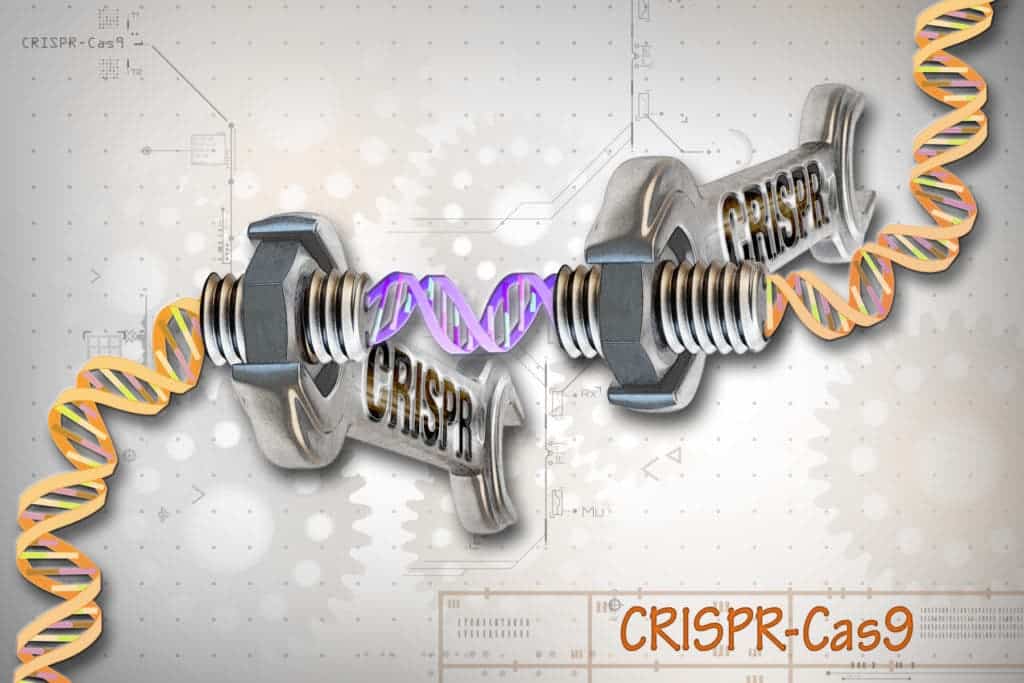
From The Island of Dr. Moreau to Bladerunner to Gattaca, the world of sci-fi on the silver screen has had a long interest in genetic manipulation. Films such as these often portray gene editing as the next big Frankenstein’s monster of biology, which is hardly a positive portrayal. Moreover, it isn’t an accurate one. The world of gene editing is a lot more complex than that.
What’s more, it’s not just sci-fi; gene editing is quickly becoming a reality. It’s too late to put the genie back into the bottle. That’s due in no small part to the fact that gene editing is a lot more accessible today than in decades past. As such, even if some countries decided to pass bans against the practice, others could continue ahead apace, creating an unequal scientific playing field on the subject of genetics.
Today, accessibility and gene editing often mean one tool in particular — CRISPR. Written in full, the tool is called Clustered Regularly Interspaced Short Palindromic Repeats. This almost certainly doesn’t clear up for you what this actually is or does, however, so let’s take a closer look at one of the leading gene editing tools in the toolbox and how it can be put to work to benefit us.
CRISPR 101
For those not in the know, CRISPR is a gene-editing tool that is developed from a natural means by which microbial bacteria edit out pieces of DNA. When a virus infects bacteria, it injects DNA or RNA into the cell, which responds by releasing a form of nuclease (Cas9) to take a snippet of the DNA or RNA sequence and store something equivalent to a genetic memory of the infection. That way, the cell has a memory of and thus a defense against infection from such a virus in the future.
The type of CRISPR we employ works in a similar fashion, snipping out DNA and RNA strands that we wish to use for a given purpose and replacing them with a DNA strand that we would prefer to have in its place. Imagine DNA to be a series of multi-colored Lego bricks. CRISPR-Cas9 thus essentially works by identifying the sequence of colored Legos that we’d want to replace, breaking them off, and replacing them with new bricks.
CRISPR and Gene Therapy
Why do this?
Think of all the diseases that exist due to faulty or damaged DNA. With a technique such as CRISPR gene editing, and the almost infinite choice of Crispr-Cas9 lentivirus vectors, we could in theory snip out the damaged or dangerous DNA strands and replace them with “healthy” sequences.”
Consider horrible and currently incurable diseases such as forms of cancer and Huntington’s disease. We could, in theory, snip out the parts of DNA sequences that code for many horrible conditions, such as sickle cell disease, and replace them with “healthy” substitutes, thereby dramatically improving the condition of or even potentially curing the patient.
CRISPR for Plants and Animals
There are other benefits that can come from CRISPR as well, not the least of which being work that can be done with animals. Genetic manipulation of animals has already gone on for decades, perhaps millennia if you include the way in which we as human beings have domesticated and bred animals to suit our needs. Modern genetic engineering has taken that focus on animal breeding and “improvement” to a whole new level.
Instead of simply breeding semi-blindly and hoping that we get a good result from animals that display positive genetic traits that we wish to emphasize, we can simply cut into their DNA sequences and insert samples of that species’ DNA that codes for traits we like. The same can be done with plants.
On one hand, that’s certainly a bit close to playing Dr. Frankenstein with nature.
On the other hand, that’s also a potential way to breed more and larger food and this can be a huge game-changer in the fight against world hunger.
That’s because CRISPR is, at the end of the day, a tool with its ultimate nature determined by how we use it. Shelley’s Victor Frankenstein seeks to play God and conquer “life and death,” imagining himself as being by his creations as the “creator and source” of a new species. At its noblest, CRISPR isn’t about playing God with different species but rather helping improve the life of our own.






